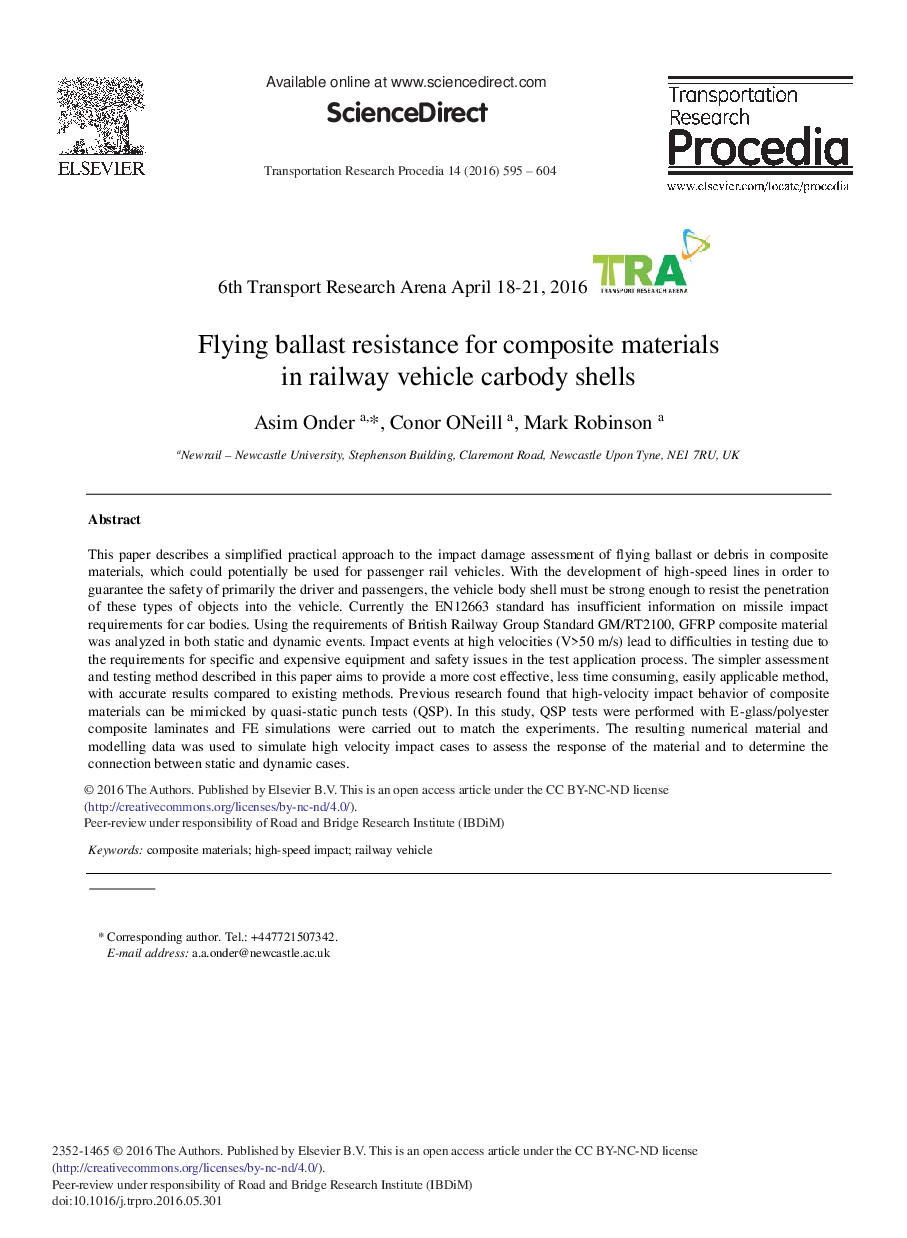| Article ID | Journal | Published Year | Pages | File Type |
|---|---|---|---|---|
| 1106246 | Transportation Research Procedia | 2016 | 10 Pages |
This paper describes a simplified practical approach to the impact damage assessment of flying ballast or debris in composite materials, which could potentially be used for passenger rail vehicles. With the development of high-speed lines in order to guarantee the safety of primarily the driver and passengers, the vehicle body shell must be strong enough to resist the penetration of these types of objects into the vehicle. Currently the EN12663 standard has insufficient information on missile impact requirements for car bodies. Using the requirements of British Railway Group Standard GM/RT2100, GFRP composite material was analyzed in both static and dynamic events. Impact events at high velocities (V>50 m/s) lead to difficulties in testing due to the requirements for specific and expensive equipment and safety issues in the test application process. The simpler assessment and testing method described in this paper aims to provide a more cost effective, less time consuming, easily applicable method, with accurate results compared to existing methods. Previous research found that high-velocity impact behavior of composite materials can be mimicked by quasi-static punch tests (QSP). In this study, QSP tests were performed with E-glass/polyester composite laminates and FE simulations were carried out to match the experiments. The resulting numerical material and modelling data was used to simulate high velocity impact cases to assess the response of the material and to determine the connection between static and dynamic cases.
